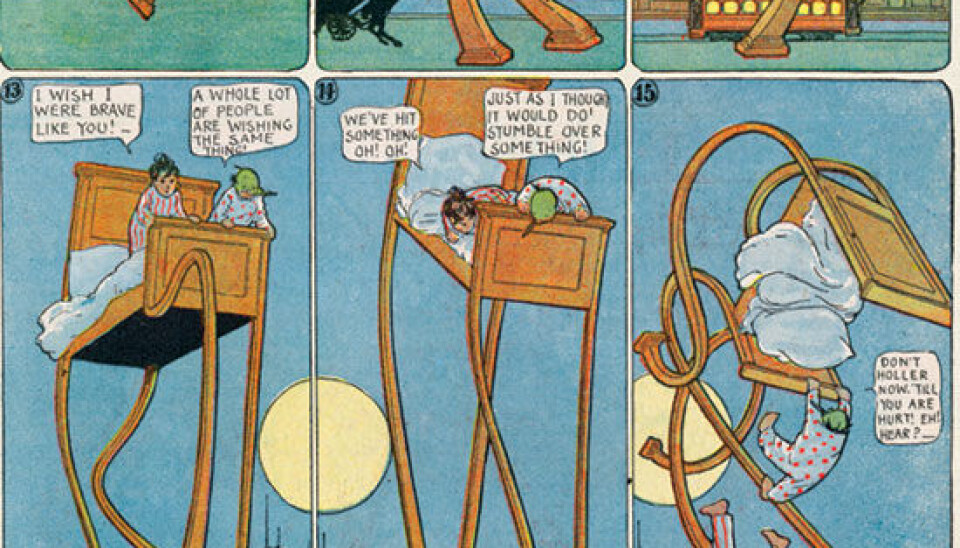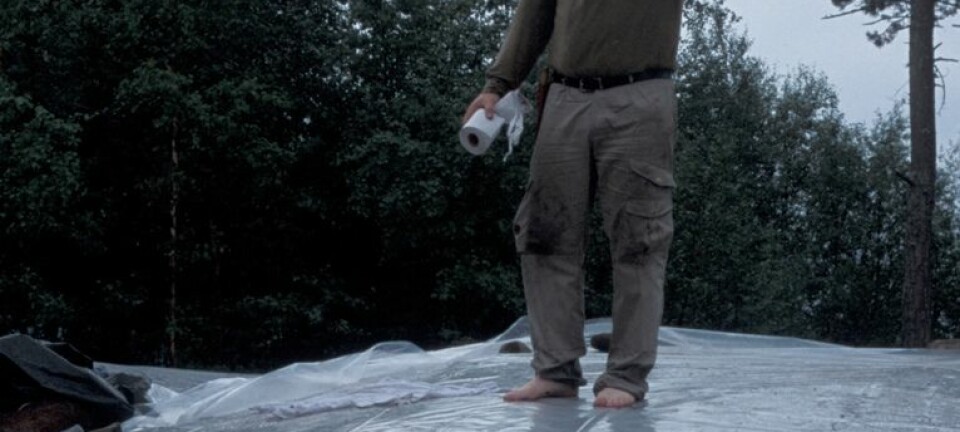
Nordic researchers flock around comics
Comics differ from other storytelling formats such as films and novels. Nordic researchers have now joined forces to understand how.
Comics are a special medium. The combination of drawings and text can tell stories in a very special way, which cannot be reproduced in movies or books.
For this reason, Nordic comics researchers have just set up a research network – NNCORE. The aim is to study how the creators of comics tell their unique stories.
“Comics have messages and can portray complex themes just like novels and films can. And the comics do it in a way that’s entirely their own. That makes it a highly relevant thing for researchers to study,” says the head of NNCORE, Anne Magnussen, an associate professor at the Department of History at the University of Southern Denmark.
”Comics are special because they can create a special interplay between the text, the individual image and the entire page.”
Brutal dictators and female prisoners
Comics have messages and can portray complex themes just like novels and films can. And the comics do it in a way that’s entirely their own. That makes it a highly relevant thing for researchers to study.
Comics can be highly complex, both in terms of storyline and the way they’re told – something that Magnussen realised when she started researching Spanish comics.
She became particularly interested in stories about the Spanish Civil War and dictator Franco’s brutal regime.
These comics depict highly complex and gloomy themes, e.g. the Spanish people’s views on the inhumane persecution and torture of the past. This theme has featured heavily in the Spanish public debate over the past decade.
One example is the comic 'Cuerda de presas' by Jorge García and Fidel Martínez. It’s about female prisoners in the 1940s – just after the Spanish Civil War, when the repression of the people was peaking.
A blend of speech and silence
Comics are special because they can create a special interplay between the text, the individual image and the entire page.
By analysing ’Cuerda de presas’ it became clear how the comic stands out as a medium. It tells a story, sometimes with words, sometimes without. In speech bubbles and in drawings. With this mixture, comics can tell us about all the things we couldn’t otherwise put into words.
”One of the stories is about an old woman, who after the Spanish Civil War was sent to prison, where she was tortured,” says Magnussen.
”In the present day a journalist is interviewing her about the experience. She says that another woman in prison did not have her head shaved like all the other inmates. A prison guard liked her, so he took her into a little room below a staircase and raped her.”
At one point during the interview the journalist switches the tape in his dictaphone and the old woman dozes off. A couple of pictures reveal her thoughts – how she was tortured. The journalist then asks, “Are you falling asleep?” But then the woman just sidesteps the issue.
In comics you can portray the past, the present and the future all at once by placing it all on the same page. In the various windows we can see what happened before, during and after.
”The old lady does not tell us about the torture. The reader knows it took place. The journalist in the story does not know about it. Points like these can be communicated uniquely in the comic medium,” she explains.
Time and space play a unique role
The fact that comics can tell stories with and without words is not the only thing that sets them apart from other media. Films can do that too.
What really makes comics unique is that they can reproduce time and space at the same time in a very special way. This exact aspect is what comics researcher Rikke Cortsen specialises in. She holds a PhD from Copenhagen University and is also a member of the NNCORE network.
”In comics you can portray the past, the present and the future all at once by placing it all on the same page. In the various windows we can see what happened before, during and after,” says Cortsen.
We hope that our research will make it easier for people to approach comics – even the more experimental comics. There are lots of great stories and experiences to be found there.
“Film directors have tried to do the same by splitting the screen into different boxes. But that doesn’t always work well."
Several stories at the same time
’Building Stories’ is one example where the depiction of time and space that’s specific to the comic medium is clearly being used.
”It tells us what’s going on at the same time in different rooms in a building. As a reader, you move your eyes around on the page,” says Cortsen.
“In this way, author Chris Ware is telling several different stories at the same time – simply by anchoring the comic in the same place.”
Lucky Luke is boring to analyse
‘Building Stories’ and the Spanish ’Cuerda de presas’ are both examples of so-called ’graphic novels’. These comics are usually thick as a novel and they often deal with complex and thought-provoking issues.
A good old ’Lucky Luke’ comic, for instance, is not a graphic novel. ’Lucky Luke’ is a series of good and entertaining comics, but they soon become tedious to analyse.
This is because the famous cowboy stories are uncomplicated. They are told in a very simple way, which does not experiment with the comic format.
”Lucky Luke and other mainstream comics follow the highly traditional comic structure. The storyline and the narrative are both very simple. If you start out analysing a Lucky Luke comic and then do a graphic novel, the great differences become clear,” says Magnussen.
”A graphic novel typically uses e.g. picture frames of various sizes to establish a particular mood or to mark a climax in the narrative. In conventional comics, on the other hand, the picture frames usually have the same size throughout the story.”
Comics researchers unite
In the past 10-15 years, researchers have become increasingly interested in the unique character of the comic format, and today most universities have comics researchers on their staff list.
But this is still a small area of research, which is why the researchers have so far not been gathered in one comics research centre.
That’s why the Nordic comics researchers have set up NNCORE – Nordic Network for Comics Research. That way, there’s no need for the researchers to reinvent the wheel by themselves.
"We hope that our research will make it easier for people to approach comics – even the more experimental comics. There are lots of great stories and experiences to be found there,” says Cortsen.
-----------------------------
Read the Danish version of this article at videnskab.dk
Translated by: Dann Vinther





